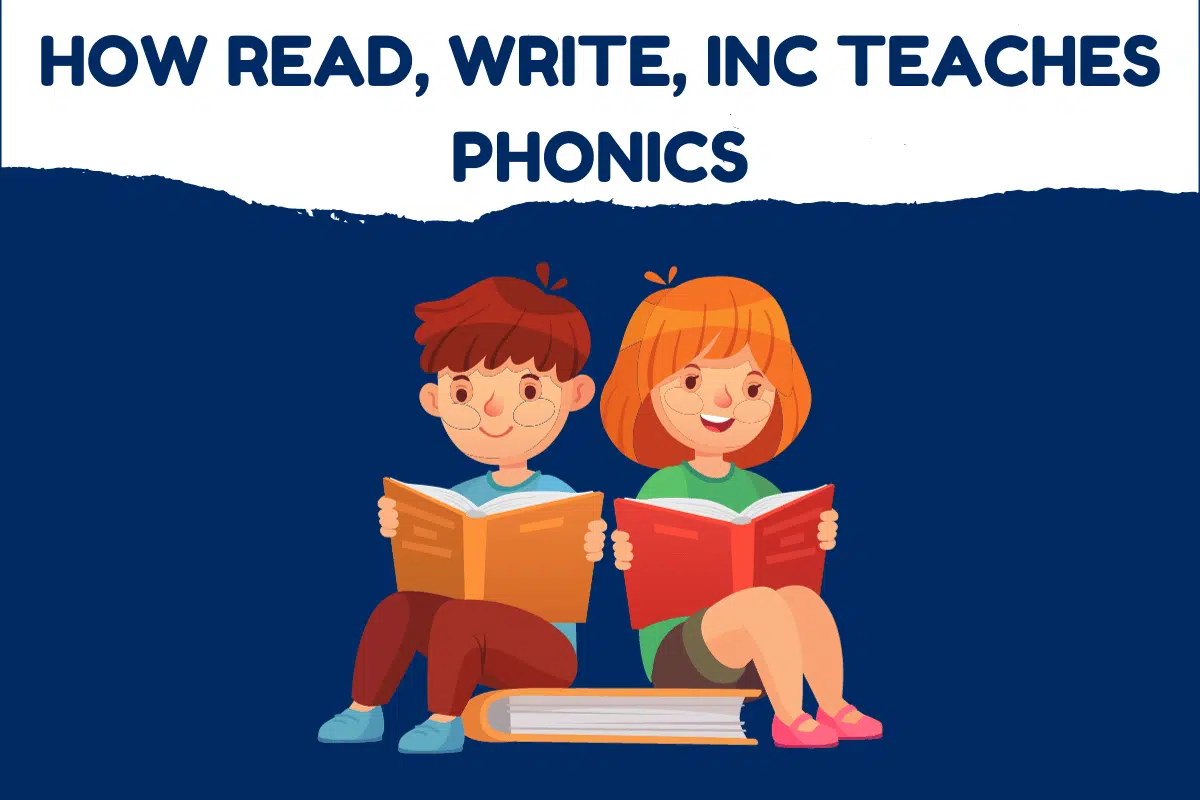Teaching in 2024 offers a complex array of challenges and rewards. As educators navigate the evolving landscape of the classroom, understanding the pressures and expectations is paramount. The need for adaptability is clear, with digital learning tools and innovative pedagogies reshaping how teachers connect with and inspire their students.
Focusing on personal well-being is equally critical, ensuring that passion for teaching doesn’t wane in the face of stress and workloads.

The teaching profession continues to transform, spurred by technological advances and shifts in educational philosophy. To thrive, teachers must actively seek professional development opportunities and cultivate supportive networks. Encouraging student success, leveraging digital tools adeptly, and embracing leadership roles are crucial steps toward securing educational success.
Key Takeaways
- Teachers need to stay adaptable and innovative.
- Professional growth and support networks are essential.
- Navigating digital tools effectively is key to teaching success.
Understanding the Teaching Landscape in 2024

Navigating the complexities of the teaching environment in 2024 requires an awareness of new trends, the critical teacher shortages, and how education policy is evolving to address these issues.
Evolving Educational Trends and Their Impact
In 2024, educational trends are heavily influenced by technological innovation and student-centric learning models. These trends show a shift towards personalized education plans that cater to individual student needs and pacing.
Online learning platforms have experienced a surge, offering a plethora of resources and opportunities for students and educators alike, reflecting a landscape where digital literacy is no longer optional for teachers—it’s imperative.
Teacher Shortages and Retention Issues
The teacher shortage has become a pressing concern, with public schools across the country experiencing a significant deficit in qualified educators. One major factor is the issue of retention; teachers are leaving the profession at high rates due to untenable working conditions and low pay.
Initiatives directed at increasing teacher support and providing competitive compensation are being discussed as potential solutions to encourage retention and attract new talent into the teaching profession.
The Role of Policymakers and Education Policies
Policymakers are taking an active role in reshaping educational landscapes to tackle the challenges of 2024. Education policies are undergoing reforms aimed at augmenting support for teachers and removing barriers to education access.
Policymakers are also assessing the impact of these policy changes on both teachers and public schools, with the aim of creating sustainable and long-term improvements in the education sector.
Maximizing Teacher Well-Being

Teacher well-being in 2024 hinges on strategic approaches to mental health and an enhancement of working conditions, including teacher pay. These elements are crucial for educators to thrive in a profession with ever-growing demands.
Prioritizing Mental Health and Stress Management
Educators confront a variety of stressors that can impede their well-being and effectiveness. Strategies to manage stress include:
- Professional Support: Schools should provide access to mental health resources tailored for educators such as wellness programs and stress reduction workshops, nurturing a culture of self-care.
- Time Management: Efficient planning and delegation can help teachers juggle responsibilities without becoming overloaded. The focus should be on work-life balance, ensuring ample time for rest and recovery.
Improving Working Conditions and Teacher Pay
A supportive work environment, coupled with fair compensation, is integral to teacher satisfaction:
- Enhanced Environment: Schools must strive to create positive and safe work conditions. This includes smaller class sizes and access to the necessary tools and technology to facilitate effective teaching and learning.
- Competitive Salaries: Competitive teacher pay is vital to retain quality educators. Pay structures should reflect the expertise and commitment required for the profession, including opportunities for career advancement.
Fostering Student Success
In teaching, the aim is to not only impart knowledge but also to enhance students’ academic performance and support their social and emotional development. Recognizing the individual needs of students is essential in creating a nurturing environment that promotes learning and engagement.
Strategies for Enhancing Academic Performance
Educators seek to implement teaching practices that directly contribute to improving student performance. One effective approach includes the integration of Artificial Intelligence in the classroom to provide individualized learning experiences for each student.
AI-driven tools can adapt to the needs of students, ensuring that those who may struggle with certain topics can receive additional support. Another strategy involves fostering a strong sense of belonging in education settings, which research demonstrates can lead to better academic outcomes.
- Implement AI tools for personalized learning paths.
- Create an inclusive environment that enhances a sense of community.
Supporting Social-Emotional Learning and Engagement
Social-emotional learning (SEL) has taken a front seat in educational priorities. Developing SEL skills such as empathy, self-regulation, and collaboration is integral to student success. Teachers are encouraged to utilize strategies that promote empathy and self-awareness to enhance student engagement.
They can design activities that require teamwork, encouraging students to understand and manage their emotions and relationships effectively. Additionally, providing materials and resources that reflect students’ diverse backgrounds can help maintain high levels of student engagement and foster a more inclusive learning environment.
- Integrate activities that build SEL competencies such as empathy.
- Use diverse materials to reflect students’ lives and cultures, fostering engagement.
Innovative Pedagogies and Teaching Methods
In the fast-evolving educational landscape of 2024, teachers are adopting innovative pedagogies that leverage technology and customized approaches to meet the diverse needs of students. These methods aim to enhance student engagement and foster a deeper understanding of the curriculum.
Integrating EdTech and Blended Learning Environments
Modern classrooms are increasingly embracing blended learning environments, where EdTech tools are integrated with traditional teaching. This fusion creates a dynamic space that facilitates both in-person and online learning experiences.
For instance, the flipped classroom model effectively combines digital content delivery with interactive class activities, maximizing the available instructional time.
Customizing Lessons to Diverse Learning Styles
Acknowledging that students process information differently, 2024’s teaching strategies cater to diverse learning styles. One can customize lessons using EdTech by offering resources in various formats—videos for visual learners, podcasts for auditory learners, and interactive simulations for kinesthetic learners. This approach ensures that all students can engage with the curriculum in a way that resonates with them.
Gamification and Interactive Learning
Gamification has transformed educational experiences by introducing game elements into learning activities. This method boosts motivation through rewards, competition, and interactive storytelling.
Educators are using platforms like AhaSlides to create gamified quizzes and challenges that make learning interactive and enjoyable, contrasting with the more passive atmosphere of the traditional classroom.
Professional Growth and Development
To thrive in the educational environment of 2024, educators must embrace a commitment to professional growth and development. This continuous process is critical for maintaining effective teaching practices and meeting the evolving needs of students and educational standards.
Continued Education and Teacher-Preparation Programs
Continued education is a cornerstone for any educator looking to stay current. Teachers are encouraged to engage in teacher-preparation programs, which often extend beyond initial certification and offer advanced training.
These programs may include masters or doctoral degrees, specialized certificates in areas like special education or ESL, and coursework that aligns with the latest educational technology and pedagogy trends.
- Key Components of Teacher-Preparation Programs:
- Advanced subject knowledge
- Pedagogical strategies
- Classroom management techniques
- Integration of technology in education
- Understanding of diverse learning needs
Leveraging Professional Development Opportunities
Educators should proactively seek out professional development opportunities to keep skills sharp and knowledge up-to-date. This might mean taking advantage of live trainings or recorded sessions on topics of interest or necessity.
It’s also beneficial to set clear professional development objectives which can guide the selection of workshops, seminars, webinars, and conferences that align with personal and institutional goals.
- Methods to Leverage Professional Development:
- Regular attendance at workshops and trainings
- Participation in peer coaching and mentoring
- Engaging with professional learning communities
- Pursuit of additional certifications or endorsements tailored to evolving educational demands
Building Supportive Communities
Supportive communities are essential for teachers’ success and students’ learning experiences. By connecting with parents and fostering respect and equity in classrooms, educators can cultivate a thriving educational environment.
Connecting with Parents and Local Communities
Teachers can strengthen their support system by actively engaging with parents and local community groups. Hosting regular meetings and workshops facilitates transparent communication and collaboration. For instance, involving parents in classroom activities can bridge the gap between home and school, and leveraging local community resources can enhance educational experiences.
- Host monthly parent-teacher meetings to discuss student progress.
- Organize events where educators and community leaders can share insights and resources.
By fostering such ties, educators create a network that values education and collectively addresses student needs.
Cultivating a Culture of Respect and Equity in Classrooms
Promoting respect and equity in classrooms is integral to an educator’s role. Creating a positive and inclusive atmosphere allows all students to feel valued and encourages active participation.
- Implement inclusive teaching strategies to address diverse learning needs.
- Set clear expectations about respectful behavior and consistently enforce them.
Educators must model and reinforce these principles daily, ensuring that disrespect is addressed promptly and effectively, and that all voices in the classroom are heard and appreciated. This approach lays the foundation for a supportive and equitable learning community.
Navigating Digital Education Tools
In 2024, the educational landscape is interwoven with technology, making the mastery of digital education tools a necessity for educators. Teachers must now effectively harness artificial intelligence and online learning platforms while prioritizing accessibility and equity to provide a comprehensive learning experience.
Effective Use of AI and Online Learning Platforms
Teachers are leveraging AI to personalize learning experiences, a technique that tailors content to meet individual student needs. Artificial intelligence (AI) in education allows for adaptive learning systems that can assess a student’s performance and adjust the difficulty of tasks in real time.
Online learning platforms complement AI by providing a hub for resources, assignments, and interactions.
Educators should focus on platforms that offer robust analytics, enabling them to track and analyze student performance with precision. Such tools can identify gaps in knowledge and offer tailored resources to bridge those gaps, promoting a more effective learning journey.
Ensuring Accessibility and Equity in the Digital Space
Accessibility in education technology (edtech) is more important than ever, aiming to give all students, regardless of their physical or socioeconomic status, the opportunity to learn efficiently. Teachers must ensure that digital resources are universally designed, meaning they are accessible to students with disabilities and support various forms of assistive technology.
The concept of equity extends to the availability of these tools, where educators should advocate for all students having the necessary devices and internet access to participate in online learning. This might involve close coordination with school administration and community leaders to address and overcome digital divides.
Leadership and Educational Success
Effective leadership is a cornerstone of educational success, particularly in 2024 when schools must adapt to rapid changes and uncharted challenges. A principal’s vision, adaptability, and commitment to excellence directly influence a school’s ability to thrive.
The Essential Role of School Leadership
In the context of 2024’s educational landscape, school leadership has never been more critical. Principals are no longer mere administrators; they are visionary figures who set the tone for innovation and academic achievement.
They have to navigate transformative changes, such as integrating technology and personalized learning, while also managing the wellbeing of their staff and students. It is their foresight and decisive actions that empower teachers to excel and students to reach their full potential.
- Visionary Leadership: Principals must cultivate a clear and inspiring vision for the future of education.
- Adaptability: An ability to adapt to emerging educational trends and technologies is indispensable.
- Academic Achievement: Through strong leadership, principals greatly influence academic excellence within their schools.
Driving Change Through Educational Leadership
Leadership in education involves being at the forefront of change and using it to drive school success. In 2024, principals must embrace new educational paradigms and lead their institutions towards effective and meaningful transformations.
By cultivating kindness and agency, principals become the change agents necessary to create robust educational environments where leadership and success are intertwined.
Strategic Focus Areas for Principals:
- Integrating Innovations: Stay ahead by adopting AI and VR technologies to enhance learning experiences.
- Building Resilience: Encourage resilience by equipping schools to handle the challenges of modern education.
- Fostering Agency and Kindness: Empower educators and students to take ownership of their educational journey, while promoting a culture of kindness and support.
Principals, through their strategic vision and leadership, play a crucial role in sculpting the educational success of 2024, adapting to challenges, and leading their schools toward a future of excellence and innovation.
The Future of the Teaching Profession

The landscape of the teaching profession is undergoing significant transformation. Educators are facing challenges that influence their career trajectories and the policies that shape their work environments.
Exploring Career Paths for Educators Beyond the Classroom
Many educators are considering career paths beyond traditional classroom roles due to factors like teacher turnover and career progression opportunities. Hybrid roles in education, which combine teaching with positions in curriculum development or educational technology, provide a professional avenue for growth while still allowing teachers to impact student learning directly.
Additionally, careers in educational policy and administration are possible transitions that enable experienced educators to influence the structure of the teacher pipeline and the future of education systems at large.
- Education Consultant – Advising schools and districts on educational practices and curriculum design.
- Instructional Coordinator – Overseeing school curricula and teaching standards.
- Educational Technology Specialist – Integrating technology into learning experiences.
Influencing Future Policy Decisions
The voices of teachers are essential in shaping the policies that affect the teaching profession. Educators have the practical experience and insights necessary to guide legislation towards more sustainable outcomes for teachers and students.
Teachers involved in policy decisions can address critical issues such as compensation, working conditions, and professional development, which are key to alleviating the teacher turnover rate. They can also advocate for investments to strengthen the teacher pipeline, ensuring a continuous supply of qualified educators for future generations.
- Engagement in Teacher Unions – Representing educators’ interests in collective bargaining and policy advocacy.
- Policy Research and Analysis – Conducting studies that inform educational laws and regulations.
- Educational Advocacy Groups – Partnering with organizations to support education reform initiatives.







